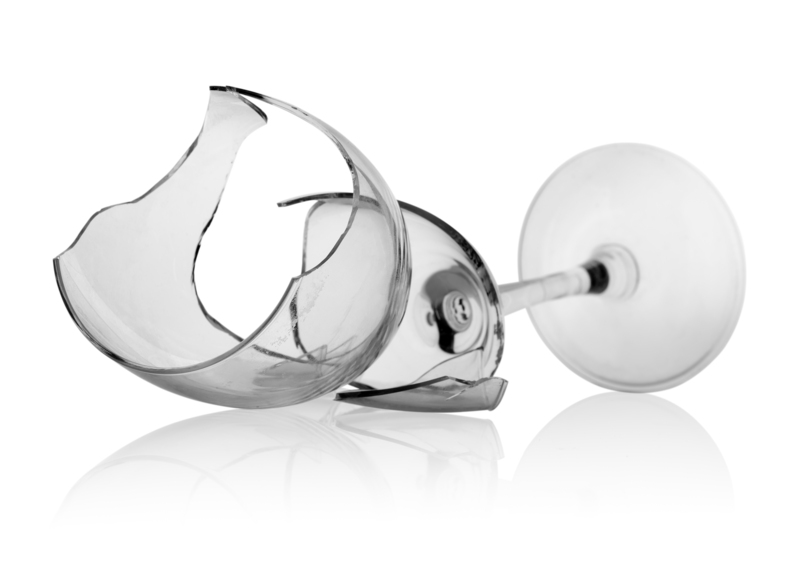Protecting Your Freezer While It's Not Plugged In or Used
Freezers are valuable appliances that make our lives easier by storing perishable foods for extended periods. But what happens when you need to unplug your freezer or it sits unused for weeks or months? Properly protecting your freezer during downtime is essential to ensure it remains safe, functional, and ready for use when you need it. This comprehensive guide covers everything you need to know about protecting your freezer while it's not plugged in or used.
Why It's Important to Protect Your Freezer During Downtime
Many homeowners make the mistake of simply unplugging the freezer and leaving it unattended, which can lead to unpleasant odors, mold growth, rust, or even mechanical issues. By understanding the risks and applying best practices, you can:
- Prevent mold and mildew arising from residual moisture
- Avoid unpleasant odors caused by decaying food remnants
- Protect electrical and mechanical components from dust, pests, or corrosion
- Extend the freezer's lifespan by preventing accelerated wear and tear
- Ensure food safety when the freezer is put back into use
Let's explore step-by-step how to safely and effectively protect your freezer when it's not in active use.

Step 1: Prepare Your Freezer for Non-Use
Empty the Freezer Completely
Before unplugging, remove all contents from the freezer. Even a small food scrap left behind can foster bacteria, odors, and mold.
- Transfer food to another functioning freezer or consume perishables promptly.
- Check for hidden trays, drawers, or corners where food particles might remain.
Unplug And Defrost
Always unplug the freezer before beginning the cleaning process. Next, defrost to remove any built-up ice:
- Leave the freezer door open to allow ice to melt.
- Place towels to soak up water from melting ice.
- Do not use sharp tools to chip away ice, as this can damage the unit.
- Once defrosted, wipe the entire interior dry to prevent lingering moisture.
Step 2: Cleaning & Deodorizing Your Freezer
Clean Thoroughly
Clean all surfaces--including shelves, gaskets, and storage bins. Use a mixture of mild detergent and warm water. For stubborn spots, baking soda is an effective and food-safe choice.
- Remove and separately wash trays and baskets.
- Wipe down the door, hinge areas, and gasket seals.
- Dry everything completely. Moisture left behind can lead to mold growth or corrosion.
Deodorize Naturally
Even after cleaning, freezers can retain strong odors. Natural deodorizers are a safe, effective solution:
- Baking soda: Place an open box inside to absorb odor.
- Activated charcoal: A strong natural odor absorber.
- Crushed newspaper: Lined in the freezer for a few days, newspaper can help draw out lingering smells.
Let the freezer air out with the door open for several hours to ensure complete freshness.
Protecting Your Freezer's Interior
Leave the Door Slightly Open
One of the most effective ways to protect your freezer while not in use is to keep the door ajar:
- Prevents mold and mildew by allowing airflow.
- Protects seals and gaskets from sticking or losing flexibility.
- You can use a small rolled-up towel or a purpose-built freezer door prop.
Keep Pests at Bay
If your freezer is stored in a garage or shed, it might draw insects or rodents. Be proactive:
- Inspect the area for pest activity.
- Seal gaps around the door and plug hole (if any).
- Use natural repellents (like peppermint oil sachets) inside the freezer to deter pests without chemical residues.
Maintain Your Freezer Externally
Clean & Protect the Exterior
The outside of your freezer also needs attention:
- Wipe down with mild soap and water.
- Dry thoroughly to prevent rust, especially near seams and hinges.
- Apply a thin layer of appliance wax to metal parts (optional) for added rust protection.
Cover the Freezer
If you're storing your unused freezer for an extended period, consider covering it with a breathable fabric dust cover. Avoid plastic sheeting, which can trap moisture and foster rust or mold.
- Make sure coverings do not seal tightly, and allow for air circulation.
- If outdoor storage is necessary, elevate the freezer off the ground to protect it from water damage and pests.
Store in a Safe, Dry Location
Avoid placing your unplugged freezer in areas prone to excessive humidity or wide temperature swings. Humidity can accelerate rust, degrade insulation, and cause odor issues.
- Ideal storage is indoors in a dry, temperature-stable space.
- If storage in a garage or shed is unavoidable, consider using a dehumidifier or silica gel packs nearby.
Maintaining Your Freezer While It's Not Plugged In
Periodic Checks Are Essential
Even though your freezer is unplugged, it still requires occasional attention:
- Inspect every few weeks for signs of moisture, rust, or pests.
- Refresh baking soda or charcoal deodorizer if odors return.
- Ensure the door remains propped open for airflow.
Protecting Mechanical Components
The freezer's compressor, coils, and electrical elements are susceptible to dust, corrosion, or impact during long periods of non-use:
- Keep the back and underside of the freezer clear of debris and dust.
- If feasible, vacuum compressor coils gently to prevent dust buildup (which can stress the system upon restart).
- Inspect power cords and plugs for signs of wear, moisture, or pest chewing.
Scent Management
To avoid mustiness, you can replace baking soda boxes periodically or use fragrance-free silica bags for moisture control.
Restarting Your Freezer After Storage
When you're ready to use your freezer again, a few steps can ensure it runs efficiently and safely:
- Inspect the interior for any mold, pest droppings, or remaining deodorizing material.
- Examine gaskets for flexibility and cleanliness. Replace if cracked or hardened.
- Clean and dry the inside once more before plugging in.
- Vacuum or brush the external coils as needed.
- Plug in and let run for several hours to reach temperature before loading with food.
Protecting Freezers Between Seasonal Uses
Many households use secondary freezers for hunting, gardening, or bulk food storage only during certain times of the year. Protecting your chest freezer or upright model during these off-seasons follows the same key principles but may require extra precautions:
- Label and store power cords securely to prevent damage.
- Position away from direct sunlight, which can prematurely age insulation.
- Monitor for condensation especially in environments with high humidity swings.
Benefits of Proper Maintenance During Non-Use
- Prevents costly repairs or replacements down the road.
- Keeps the freezer clean, hygienic, and ready for use at any time.
- Reduces waste by avoiding unpleasant surprises when returning to the appliance after several months.
- Protects your investment and can extend the appliance's total useful life.
Common Mistakes To Avoid With Unused Freezers
- Leaving moisture or residue inside, encouraging mold or rust.
- Closing the door tightly, which can trap foul air and moisture.
- Forgetting periodic checks and letting issues go unnoticed.
- Placing heavy items on top of the freezer, which can warp the lid or compromise seals.
- Failing to clean external vents and coils, leading to inefficient operation when restarted.

Frequently Asked Questions About Unplugged and Unused Freezer Maintenance
Is it safe to store a freezer unplugged for several months?
Yes, provided you thoroughly clean, dry, and leave the door ajar. Ensure you also check periodically for moisture or pests.
Why does my freezer smell musty after being unplugged?
Musty odors often result from trapped moisture or residual food. Using deodorizers and keeping the door open during storage prevents this issue.
Can mold grow in an unplugged freezer?
Absolutely. Even a small amount of moisture sealed inside can facilitate mold growth, so drying and ventilation are critical.
How can I keep pests away from my unused freezer?
Store your freezer in a clean, sealed location. Use natural deterrents inside, and regularly inspect for pest activity.
Should I use a plastic cover?
No, plastic covers trap air and moisture, increasing the risk of rust and mold. Use a breathable fabric cover instead.
Conclusion: Protecting Your Freezer While It's Not In Use
Taking the right steps to protect your freezer while it's not plugged in or in regular use is a simple but essential part of home maintenance. A clean, dry, well-ventilated appliance will be odor-free, pest-free, and ready for use at any time. By following the advice laid out in this comprehensive guide--from cleaning and deodorizing to covering and checking your freezer--you'll not only protect your investment, but also extend your freezer's lifespan and improve food safety.
Remember: prevention is always better than cure. Plan ahead to minimize problems and ensure that your freezer remains in top condition, ready to serve you when the need arises!
For more home appliance tips and maintenance guides, explore our blog and keep your home running efficiently!